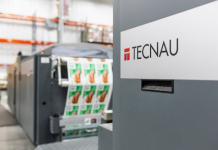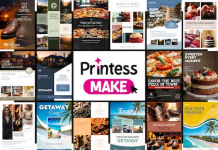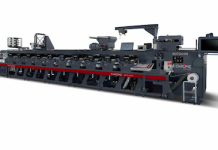James de Waal, head of marketing, business imaging group, Canon South Africa, discusses how digital print technology is enabling publishers to turn a new page and drive customer-orientated innovation that will stimulate sustained commercial growth.
There is mounting evidence that the long-predicted demise of the printed book in the face of new digital alternatives has not come to pass. In fact it would seem that many readers – including so-called ‘digital natives’ – are returning to the traditional reading experience in a bid to combat rising fatigue with digital platforms.
But this renewed optimism for the future of the printed book does not change some of the fundamental challenges for publishers. Firstly, the sizeable financial risks associated with launching new products and, secondly, the pressure to restructure their cost base in a market where the supply chain is being reshaped by on-demand expectations from retailers and buyers of books.
Mike Hunter, founder of German book producer Hunter Books & Mail, summarised it neatly when he said, ‘Capital commitment is the key word for publishers. Nowadays, they don’t want to offset print large numbers of copies. This is cost effective for large editions but might result in excess stock that is difficult to shift. It’s basically a waste of paper if it proves difficult to sell. Consequently, publishers are increasingly choosing to print smaller runs and wait for the books to sell, instead of having lots of stock stored in a warehouse.’
And there is a third, new challenge for publishers: to understand today’s time-poor content ‘consumer’ and deliver products and experiences that meet their individual needs, in contrast to the one-size-fits-all approach of the past. Sven Fund, founder and managing director of Fullstop and a keynote speaker at the Future Book Forum in 2017 and 2018, spells it out in simple terms, ‘For publishers, it’s not about producing more titles, it’s about targeting readers in a more precise way.’
Fortunately, innovative digital production technologies are enabling new models that are helping publishers change the conventional ways of producing books. Without the constraints imposed by the need to produce minimum quantities of a book to make its launch financially viable, publishers find themselves free to develop new products and go-to-market strategies that can improve their profit margins and create new opportunities to extract additional value from the content they own the rights to.
The simplest of the digital business models for both publisher and book producer is short-run digital production, which increases flexibility around production and distribution by replacing offset printing of shorter run titles with digital, improving speed to market.
The next, more technically sophisticated step is book life cycle management offering publishers the possibility to match order and print production to actual demand for single titles. One key advantage of this business model is that it can help publishers to eliminate the risks associated with rare titles or new authors. As Mathijs Suydman from The Netherlands’ book manufacturer Joint Book Services explained, ‘Sales of physical books are reducing. The consequence is that still the same number of books are published but the average series of an edition is smaller. This is resulting in print runs getting smaller and smaller, so it is now less viable to keep these titles in stock. That puts forward a tough challenge for publishers: to deliver a book efficiently to the market. Today, optimising stock replenishment for short run printing is required so that publishers don’t have to wait for a book to be produced or be taken by surprise because of a sudden rise in demand.’
The third and most advanced of the digital models is full on-demand production, whereby books are printed as and when required to fulfil an individual order. This makes the length of a production run an irrelevance, so that a single ‘book of one’ can now be cost effectively printed and finished in minutes from a print-ready digital file.
Joint Book Services produces around 600,000 books a year on demand. Suydman continued, ‘Consumers are more demanding than they used to be, wanting books delivered tomorrow or even the same day, which is why we need solutions that deliver a book as soon as possible. Print on demand is the answer. The turnaround time for a book that we produce on demand is exactly the same as for a book in stock, with delivery within 24 hours. We can now guarantee a publisher that a book is always available and support them with single copy or short run printing services. As we look to the future, the most ideal situation would be to have no stock at all.’
For publishers, full on-demand production gives rise to fascinating opportunities that were simply out of the question with analogue production methods. For example, this ability to deliver a single book on-demand, at a sufficient margin, challenges traditional publishing economics and creates an entirely new chapter for leveraging the long-tail opportunity of backlist and specialist niche titles, growing the business of self-publishing and re-using out-of-print content.
Munich-based publishing house, Goloseo, specialises in reviving treasured out-of-print children’s literature. The original business idea of the MD and owner, Stephanie Fehr, was to publish these classic titles in digital formats like e-books and animated e-books. While this approach was intended to align with changing consumer trends, Fehr quickly realised that there still remained a high demand for the printed version among parents. With on-demand production methods, Goloseo is able to serve this demand without holding any stock and can manufacture in direct response to orders.
Digitally printing individual titles can enable publishers to develop a specific value proposition. This was the case for Signature Books, whose diverse personalised product range includes calendars, posters, engraved gifts, mugs, ceramics and textiles. Digital on-demand book production with colour inkjet technology has enabled the company to deliver some 300,000 personalised books a year, working with content under licence from brands such as Penguin, Beano, Disney, Marvel, Ladybird and Mirror.
These forward-thinking businesses demonstrate the commercial opportunities for publishers willing to be more radical with their strategies and business models to generate new value from archive content.
Addressing publishers at Future Book Forum 2018, Mark Allin, former CEO of global publishing company John Wiley, said ‘Publishers need to have the confidence to try new ideas and get rid of old ways of working. But this requires a cultural change within the industry and dedicated resources to successfully innovate. Publishers must use the tools and technology available to them to get closer to their reader community to foster innovation and drive growth.’
There are many creative new ways for publishers to get the most out of their content inventories. Today the printed book can sit at the heart of a multi-channel consumer experience that engages the ‘reader’ in a variety of ways and encourages an extended content journey – what we call the ‘smart book’. New content platforms give publishers fresh potential to mine their content assets, bring a variety of engaging and interactive formats together and create more personal, predictive and profitable experiences.
As Future Book Forum’s event chair, Peter Fisk, explained, ‘The key is to take content and use it in different ways across different platforms – print, online, email, video, podcasts, events and more – to enhance the consumer’s experience and build a sustainable relationship, much as retailers and marketers do. But seizing this opportunity demands a shift of both mindset and business model. It’s about putting the customer first and creating valuable consumer experiences that enhance the value of the physical book.’
It’s time to move on from the angst-ridden debate of the last decade about the demise of the printed book. Let’s focus on the positive opportunity for publishers to unlock the untapped value of their content to offer consumers a richer choice of products that redefine the ‘book’ for new generations of readers.
CANON SOUTH AFRICA (PTY) LTD (+27 12) 675 4900 www.canon.co.za





















